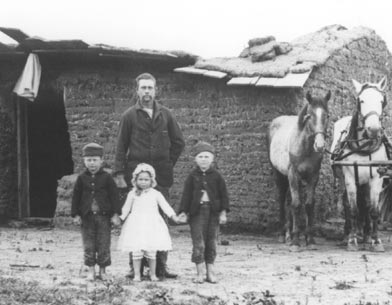
Facts About Sod Houses. The structures may have first appeared on the open prairie of Nebraska. Sod houses were made of blocks of sod or layers of turf. Sod was laid around the sides and on top of boards placed above the window frame. An adaptation to the lack of trees in the west.

The fact that they were basically made of dirt made them virtually fireproof. The sod turned by the plow and held together by roots was lifted in strips and usually cut in 3-ft 1-m lengths sods. The module includes the interactive activity Building a Sod House hands-on activities and a list of recommended readings related. These houses called soddies stayed cool in the summer and warm in the winter but they had their problems too. Pioneer House Pioneer Day Pioneer Life Salina Kansas Great Lakes Region Land Of Oz Family Tent Great Plains Old West. It opened up millions of acres for the pioneers.
This is a short history of sod houses.
Early settlers of the Great Plains constructed sod houses where there were no trees to supply lumber. As a building material sod became known as Nebraska marble Homesteaders cut sod with spades into square blocks which they piled up to build walls. To get strong roots sod grass has been planted in the best soil has been regularly fertilized and has enjoyed enough water. Wood was scarce on the prairie but thickly-thatched sod was abundant. The walls were hewed smooth with a spade and were often. The lack of stones and trees made building houses difficult.